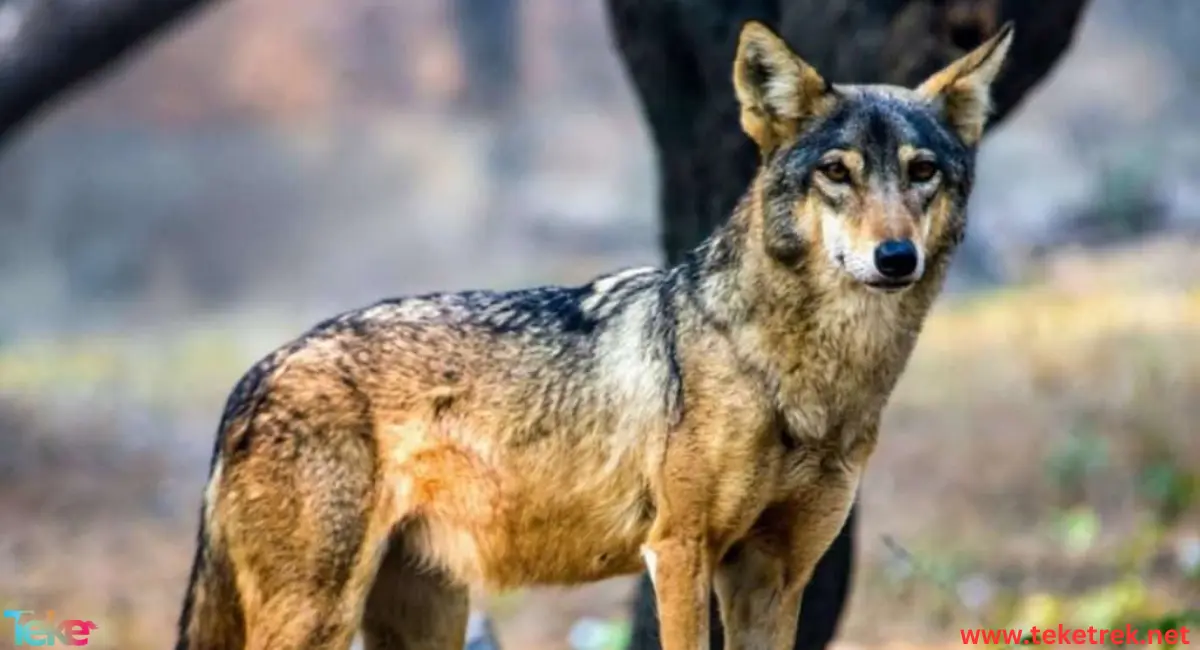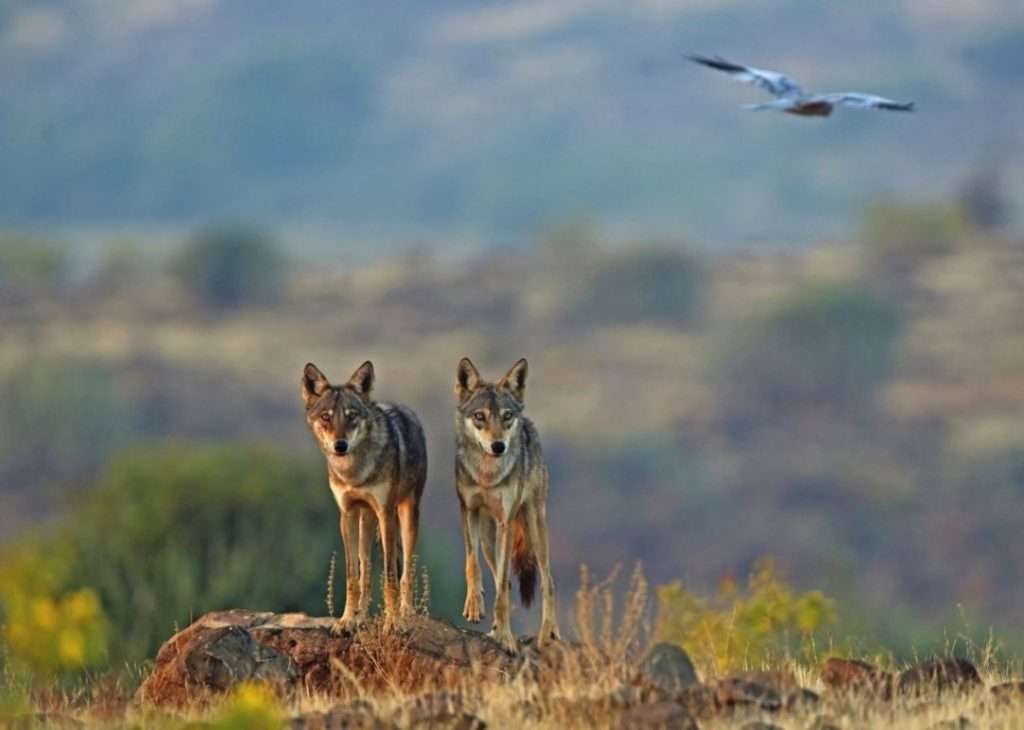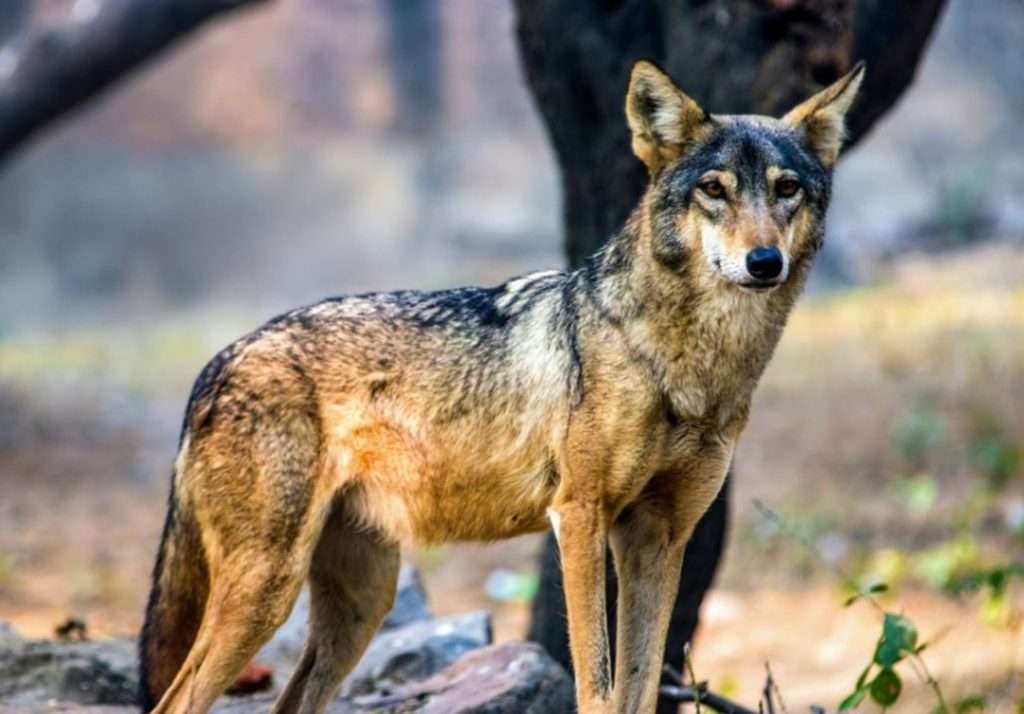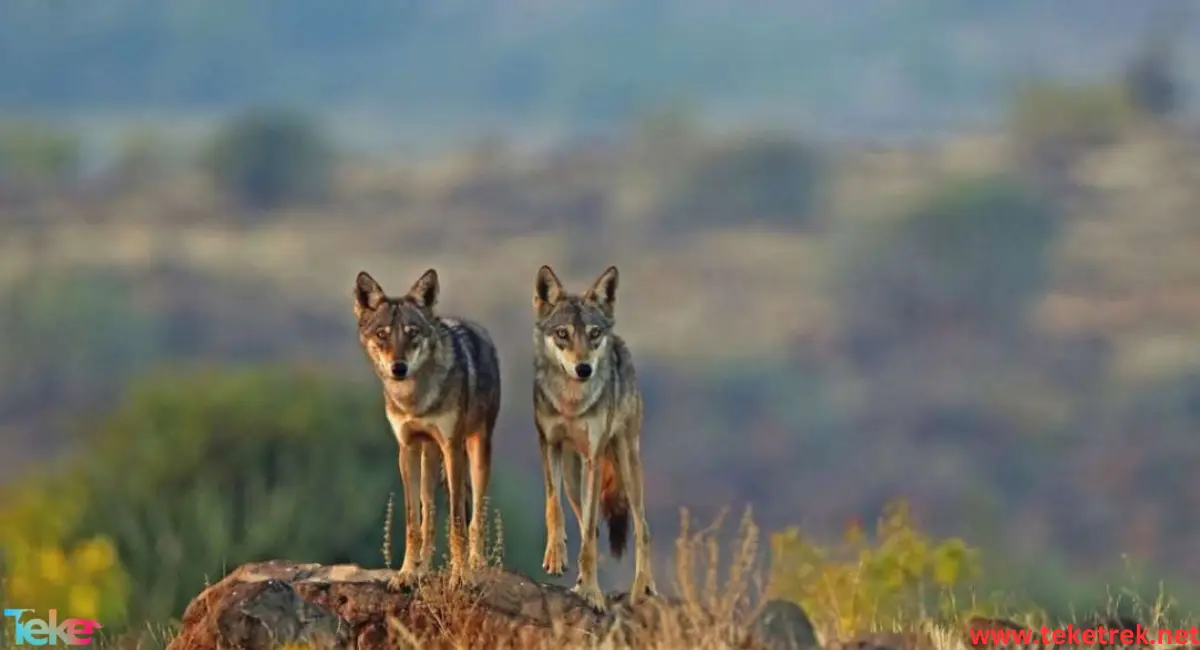The Indian wolf is considered one of the most famous types of wolves, and its name has appeared several times in history.
In this article from the teketrek website, we talk more about its behavior, habitats, and its most important types.

About the Indian wolf
In the classification of animals, the Indian wolf belongs to the phylum Vertebrates, class Mammalia, order Carnivores, family Canidae, and its genus is Canis.
It lives about thirteen years in nature, while it reaches sixteen years in captivity.
Characteristics of the Indian wolf
The size of the Indian wolf ranges from small to medium, in addition to:
- Its body is covered with a thick fur, the color of which ranges from gray-brown to reddish-white.
- While the color of the fur on the top of the back is gray, mottled with black, it extends to cover the base of the tail, reaching its middle, and ends with a tuft of black hair.
- The abdomen and the inner side of the legs are covered with fur that ranges in color from orange to light, tending to white or cream.
- While the color of the legs on the outside is lighter than the color of the body.
- The density of the fur varies according to the seasons, as it is denser in the cold seasons compared to the hot seasons.
- The Indian coyote’s tail is usually less than half its body length.
- Its ears are large, with thick white hair inside, and the color of the eyes is yellowish brown.
- The number of toes on each foot is four.
- The number of teeth is forty-two.
- In addition, its weight ranges from fifteen to thirty-three kilograms.

Food of the Indian wolf
The Indian wolf is a carnivorous animal, and its diet varies depending on its type.
In general, it hunts various prey, for example: rodents, rabbits, deer, ibex, dogs, and herds of livestock.
- In addition, it eats carrion when available and several types of insects.
- Furthermore, it has been recorded attacking humans.
- It is worth noting that the Indian wolf consumes about nine kilograms of meat per meal.
Indian wolf habitat
- The Indian wolf lives in semi-desert areas, grassy areas, whether arid or semi-arid, and wide pastures, but it avoids dense forests and rocky hills.
- You can find it in Syria, Saudi Arabia, Egypt, India, Iraq, Iran, Palestine, Lebanon, Jordan, Kuwait, Turkey, Afghanistan, and Pakistan.
Reproduction in the Indian wolf
The Indian wolf breeds in October, November, and December, where:
- The duration of pregnancy is about sixty-three days.
- Wolves reach sexual maturity at twenty-two to forty-six months of age.
- The female lays about thirteen young at a time.
Interesting facts about the Indian wolf
Among the most prominent facts about the Indian wolf:
- The Indian wolf was the main totem of many primitive Turkic tribes.
- The Indian wolf also became the national symbol of several countries in Türkiye, including: the Hun Empire and the Ottoman Empire.
- The head of the Indian wolf is placed on the flagsticks they carry in battle.
- The Indian wolf was also mentioned in manuscripts that it embodies Satan and was considered a symbol of evil.


FAQ
common questions Among the most common questions about the Indian wolf:
- What is the name of the female wolf?
The female Indian wolf is called several names, for example: “wolf” or “wolf”.
- Is the wolf the strongest animal on earth?
Yes, the wolf is considered the most powerful animal on Earth.
- What breed does the wolf belong to?
The wolf belongs to the phylum of vertebrates, the class of mammals, and the order of carnivores, the family of canids.
- What is the name of Ibn Al-Dheeb?
The baby wolf is called several names, including: pup, hearing, or germot.
- Who is stronger, the lion or the wolf?
The lion is the king of the jungle, therefore he is stronger than the wolf.
- Who feeds on the wolf?
The bear is a major predator of wolves, targeting them and humans can hunt them.
- Who leads the wolf pack?
Wolves live in packs led by the strongest wolf among them.
- Is the wolf a breed of dog?
Yes, the wolf is a species of canid.


In short, the Indian wolf is a carnivorous vertebrate mammal from the Canidae family. It inhabits Asia. It has a prominent name in ancient civilizations and plays a major role in the food chain and environmental balance.






